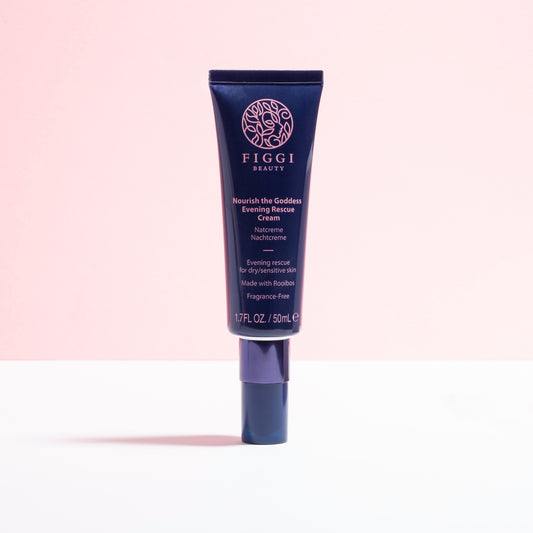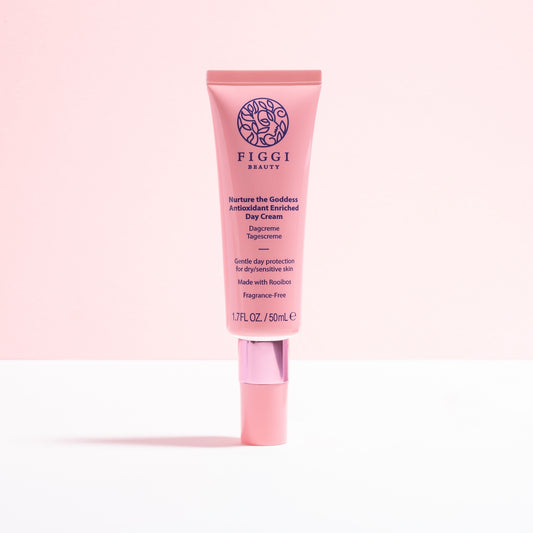A struggling global economy, over-inflated beauty prices, and the aftershocks of COVID on many household finances have led many of us to downsize where we can. Scaling down on skincare and beauty products fits into the category of minimizing optional extras.
We have more access to beauty information than ever: Websites that explain the ingredients in your skincare products, YouTube channels dedicated to uncovering the truth behind your favorite beauty brands, and a wealth of articles written about the good, bad, and ugly of the skincare world.
One of the biggest game changers in the skincare industry is the explosion of indie brands that are able to sell skincare you love for a fraction of the price. Often this is perpetuated by the fact that only necessary actives and ingredients are included in the product. Packaging is minimalistic, and formulations are basic to keep the costs as low as possible.
This raises the question: Why is your skincare still so expensive?

I cannot speak to huge beauty conglomerates because they do not face the same challenges as indie brands, and, let’s be honest, in many cases, you pay for the name and the luxury attached to that name.
As the founder of the indie brand FIGGI Beauty, I openly share with you my take on the expenses of your indie products and what is inflating the cost for you, the consumer.
1. Misleading Consumer Education
There is always a yin and yang in life. The skincare industry is not an exception. It’s great to have so much information about what we put on our skin at our fingertips. Still, the wealth of inaccurate information perpetuated by “experts” on the wide web is a definite low blow.
There has been so much misinformation directed to consumers that I can’t address that in a paragraph. I will, at a later stage, dedicate an entire post just to this 
The fear-mongering of perfectly safe and well-tested product ingredients has led to a cost crisis. Brands are scrambling to replace common helper ingredients in their products with alternatives, that are often a lot more expensive than the initial ingredients used. Some of these may ring a bell, like parabens and the ultimate devil of all – petrolatum.
When the cost of the formulation goes up due to replacing these and other everyday ingredients, the product cost goes up, which means the cost to the consumer goes up. It’s easier for indie brands to increase the product’s price by avoiding the ingredients consumers mistakenly perceive to be dangerous than to re-educate consumers. Re-education takes time and a lot of money. Having to choose between the lesser of two evils, many indie brands are forced to go the route of a more expensive product that meets the goals of the misinformed consumer.
Parabens, for example, have been placed under a blanket “evil ban.” However, there are many types of parabens. The EU Cosmetic Ingredient Database lists up to 34! Those most commonly used in skincare are extensively regulated and include methylparaben, ethylparaben, propylparaben, and butylparaben. These safety regulations are set by the Scientific Committee on Consumer Safety in the EU, whose sole purpose is to protect the consumer and guard against harmful ingredients.
The EU Cosmetics Regulations also have extensive information on what can and cannot be used in skincare. There is a comprehensive safety assessment every product needs to go through before it can be accepted to be registered on the EU database. Without this registration, you cannot legally sell the product in the EU. All FIGGI Beauty products meet the extensive European regulations for skincare.
As part of this extensive process, every ingredient in a product needs to meet the rigid safety rules, which include the prohibition of any carcinogenic, mutagenic, or toxic ingredients.
In short, misinforming consumers about safe and general product ingredients has led to an avalanche of miseducation. This, in turn, has led to many indie brands steering away from perfectly safe ingredients in favor of more expensive ingredients for the sole purpose of looking better to the consumer on the ingredient list. Unfortunately, this can hike formulation and manufacturing costs, directly impacting the price of the end product bought by the consumer.
2. The Luxury Experience of Sophisticated Formulations
Has your dermatologist ever told you that a drugstore brand is precisely the same as a luxury brand without a heavy price tag? Was it hard to believe? This is another element that adds to the cost. Getting a formulation exactly right takes time, trial, and error. That is why you often have a different consumer experience with a cheaper brand than a more expensive one, even though the ingredients are essentially the same.
Everyone loves a sensory experience. It is part and parcel of the skincare journey. You want it to feel good on your skin, not be too sticky, rub in quickly, and absorb well. The list of formulation requirements can be endless. The bottom line: As great as the ingredients are, consumers also want the product to feel good. This increases the cost. Here is why.
One of the most commonly used helper ingredients in skincare is xylitol. Just like you get budget olive oil in liter cans and designer olive oil from Italy that tastes like you’ve entered another world, you also get ingredients and ingredients in skincare formulations. You can easily settle for the cheap xylitol version in your formulation, which may make it much more sticky and gooey and decrease the sensory experience. Or you could go with the Rolls Royce of xylitol, produced expertly and supplied by trusted names in the skincare manufacturing industry. That feels like silk sliding through your skin. This is just one ingredient out of the dozens in a formulation. Almost every ingredient has a budget option. However, as with many things, it will affect the overall quality and sophistication of the formulation, which will affect the consumer experience.
So higher-end ingredients, and more sophisticated formulations, equals a higher product cost. This, in turn, equals a higher selling cost to the consumer.
3. Green Packaging
We are all trying to save the environment and live as green as possible. Unfortunately, being green has become somewhat of an “it-word” in the sales industry. The reality is that green packaging often costs way more than standard packaging. When you are an indie brand and not meeting a minimum order quantity in the millions, this can make or break you on costs.
It is challenging to create skincare packaging that is good for the environment, aesthetically pleasing, functional, and most importantly provides the best safety and hygienic option for the formulation inside. Many green options also have limitations on how the raw packaging can be decorated, i.e., color blasted, how the wording and logos are printed on the bottles, etc. This can also increase costs.
In short, trying to meet the environment’s needs while simultaneously visually appealing to the consumer and ensuring the prolonged safety and protection of the formulation inside can be expensive.
Again, a raised cost increases the overall cost of manufacturing the products, which increases the costs to the consumer.
4. Shipping & Legalities
Consumers often think that skincare is expensive based on the ingredients list. It’s easy to assume something is prescriptively costly when you only consider the nuts and bolts of what went into the formulation. However, so many expenses (if you are not cutting corners on legalities, regulations, and safety) contribute to the end cost of making products. Here are just a few.
Legal expenses exist for getting your product approved to be sold on the market. As explained above, there are many safety regulations. The tests the products need to go through before a legal representative even look at the formulations for placing it on the market can run into tens of thousands per product. If these requirements are met, there are further expenses to register the product, keep it on the safety databases, etc.
Shipping has unfortunately increased significantly post-COVID due to global upsets like the war in Ukraine. Shipping also does not only consist of getting the mass product delivered from the manufacturer to the sales point; it also includes what you need to pay in monthly fees to house the products (safely) in the local and regional courier or shipping warehouses. Consumers prefer to avoid paying for shipping on e-commerce. Therefore, the skincare brand must also bear the courier costs of any single order product.
All of these costs quickly add up to a hefty sum, which increases costs for the brand and, therefore, increases the cost of the product.
The TakeAway
There will always be people trying to take advantage of others, which I cannot deny. However, if you are a brand focusing on the proper routes, adhering to regulations, meeting legal requirements, and providing quality products – there are a lot of costs that go into making that beautiful bottle in your bathroom.
It helps me make informed decisions when I understand the back story of something. I hope this post helped you know the indie skincare industry and some of the cost challenges that must be considered to bring you the beauty of a skincare experience.
Love and Light
Jeanne




